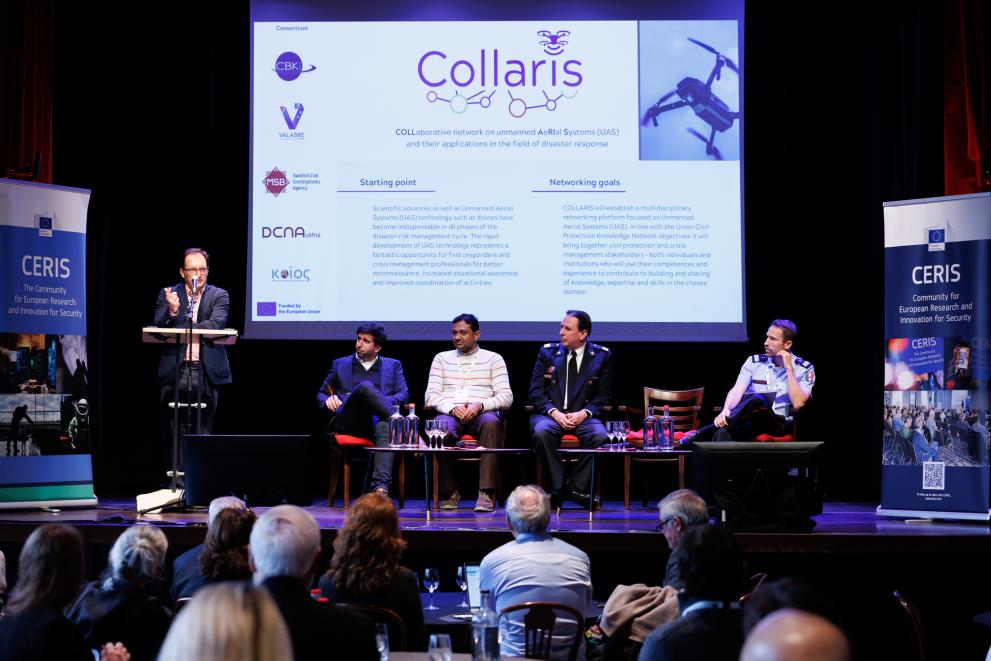
Drones and other unmanned aerial systems (UAS) have been regularly used in civil protection for a few years, but we are missing a corresponding ecosystem among end users and other stakeholders, for instance, systems which allow the use of drones together with normal helicopters and planes while responding to a disaster. This ecosystem, however, could enable effective use of innovation – similar problems exist for other innovative systems as well.
In the case of UAS, COLLARIS aims to change this situation for the better – not just for the duration of the project, but in the long run. This was explained by Jakub Ryzenko (Centrum Badań Kosmicznych Polskiej Akademii Nauk, coordinator of the COLLARIS project) during the Disaster Resilient Societies (DRS) event that was organized by CERIS (Community for European Research and Innovation for Security) in early December 2023. A video recording of the corresponding panel is available here:
Transforming theoretical capabilities into practical use
At the event, Jakub Ryzenko was part of a panel on “Tools and technologies for monitoring, surveillance and rescue" and highlighted the challenge of transforming theoretical capabilities into practical use, e.g., making it possible to use drones and helicopters during a wildfire at the same time and, thus, increase the effectiveness of disaster response.
On a general note, the panel looked at questions such as: How can we make sure that innovations and new tools make their way to first responders? What kind of data do experts involved in disaster management need at what time? And how do we develop research projects that are useful for this community?
The other speakers were Krishna Chandramouli (senior researcher at Queen Mary University of London), Robbert Heinecke (professional fire fighter from the Netherlands), and Quentin Brot (fire fighter from France) who also shared their experiences and knowledge in terms of research projects and the work of first responders. The panel was moderated by Christian Resch, the managing director of Disaster Competence Network Austria (DCNA) which is also a core partner of the COLLARIS project.
Q&A: How can drones be beneficial?
In a lively Q&A session after the panellists’ presentations, many interesting aspects were discussed, e.g. the interoperability of different solutions and how data can be shared between these solutions (find out more about this in COLLARIS's reports on solutions for data analysis and sharing as well as auxiliary support systems for UAS used in civil protection). Besides that, the transport of organs using drones was discussed – a use case that is also still lacking a European ecosystem.
Many thanks to CERIS for organizing this event and to all the participants!

About COLLARIS
COLLARIS (COLLaborative network on unmanned AeRIal Systems) is a capacity-building initiative to develop a sustainable European network of scientific, engineering, and end-user expertise related to unmanned aerial systems (UAS) in civil protection and disaster response. COLLARIS will offer a networking platform as part of the Union Civil Protection Knowledge Network for information exchange and experimentation with advanced concepts of UAS for disaster response and crisis management. These activities are accompanied by thematic workshops, webinars, and moderated discussions, as well as trials and embedded first responder trainings, aimed at increasing the efficiency of UAS operations by bringing knowledge closer to operational use.